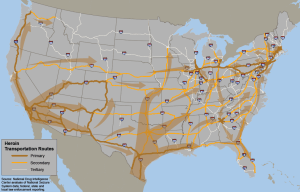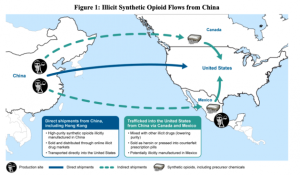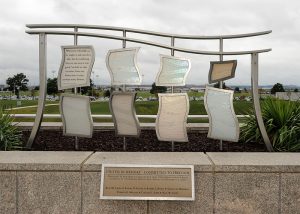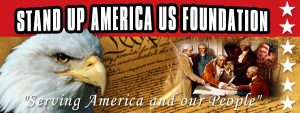Editor’s Note: While the DNC engages in sabotage and treason to cover for The Deep State within our government agencies…As it was before 9 11 in “protest of an election” to add delay…The sabotage of the White House computers by Clinton staffers…The Aviation Security Agent’s report and warning concerning Logan Airport…what was the D.I.A. investigating and what personnel records were involved within that side of The Pentagon… and much more…History repeats itself.
“Recognition of Reality”
By: MG Paul E Vallely, US Army (Ret)
November 1, 2019

Several years ago, I had the opportunity to co-chair a delegation to Cairo, Egypt to meet with General El-Sisi and his staff regarding the removal of the Muslim Brotherhood’s Morsi from office of the President. The first revolution was the removal of President Mubarak and the second revolution being the removal of Morsi. It was a tumultuous time in Egypt with a failing economy, chaos throughout the country, and a future election to elect a new President. As it turned out, General El-Sisi was elected the new President and formed a new government.
During our conference with the General Officer staff, El-Sisi and the Generals on his staff expressed that they were quite disturbed and upset with the United States, Obama, and Congress, for denying military aid and supplies to Egypt for overthrowing Morsi. General El-Sisi turned to me in his office and said, very emphatically, why does America and its political leaders always make their decisions looking through a “political prism” and not through a “reality prism”? I thought about his statement and I said to myself, yes, we do that in the US. We tend in Washington to make all our decisions through, particularly Congress, in a partisan, political way. El- Sisi said, “I cannot function that way as I have to look at the reality of our region: troubled countries like Libya to our west, Somalia to our south, the Suez Canal, the Sinai.” Well, it was a renaissance moment for me as I pondered and came to the realization, if you analyze and solve a countries issues, the country is best served by solving its problems by looking through a “reality prism” and not attempt to solve its problems through a dreaded “political prism” that tends to distort the issues and come to no logical conclusions.
Definition of reality:
“Reality is the sum or aggregate of all that is real or existent, as opposed to that which is only imaginary. The term is also used to refer to the ontological status of things, indicating their existence. In physical terms, reality is the totality of the universe, known and unknown. Philosophical questions about the nature of reality or existence or being are considered under the rubric of ontology, which is a major branch of metaphysics in the Western philosophical tradition. Ontological questions also feature in diverse branches of philosophy, including the philosophy of science, philosophy of religion, philosophy of mathematics, and philosophical logic. These include questions about whether only physical objects are real (i.e., Physicalism), whether reality is fundamentally immaterial (e.g., Idealism), whether hypothetical unobservable entities posited by scientific theories exist, whether God exists, whether numbers and other abstract objects exist, and whether possible worlds exist. the world or the state of things as they exist, as opposed to an idealistic or notional idea of them.”
Well, then, what do the citizens of the United States do about this dilemma and the system of governing by our partisan, elected, political leaders and how do we as a country start solving our problems based on reality and not partisan politics?
| Rise of Partisan Politics |
Even during George Washington’s first administration it was evident that partisan factions had emerged within the cabinet as well as within the country at large. The forces favoring a strong federal government were led by Alexander Hamilton and would become known as the Federalist Party. The advocates of strong state governments were led by Thomas Jefferson and became known as the Jeffersonian Republicans.
There is no unbroken descent from the early political factions to today’s parties. Hamilton would no doubt be attracted to the pro-business inclinations of the current Republican Party, but his preference for direct government intervention in the economy would fit better with the Democrats. Similarly, Jefferson’s emphasis on individual rights would be welcomed by today’s Democrats, but his insistence on a small federal government would be viewed today as a Republican concept.
In the United States, the meaning of the term “partisan” has changed dramatically over the last 60 years. Before the American National Election Study (described in Angus Campbell et al., in The American Voter) began in 1952, an individual’s partisan tendencies were typically determined from their voting behavior. Since then, “partisan” has come to refer to an individual with a psychological identification with one or the other of the major parties. Candidates, depending on their political beliefs, may choose to join a party. As they build the framework for career advancement, parties are more often than not the preferred choice for candidates. Wherein there are many parties in a system, candidates often join them as opposed to standing as an Independent, if that is provided for.
In the U.S., politicians have generally been identified with a party. Many local elections in the U.S. (as for mayor) are “nonpartisan.” A candidate may have a party affiliation, but it is not listed on the ballot. Independents occasionally appear in major contests but rarely win.
President Dwight D. Eisenhower was nonpartisan until 1952, when he joined the Republican Party and was elected president. According to David A. Crockett, “Much of Eisenhower’s nonpartisan image was genuine, for he found Truman’s campaigning distasteful and inappropriate, and he disliked the partisan aspects of campaigning.”[1] With little interest in routine partisanship, Eisenhower left much of the building and sustaining of the Republican Party to his vice president, Richard Nixon.[2] With Eisenhower uninvolved in party building, Nixon became the de facto national GOP leader.”[3]
Eisenhower’s largely nonpartisan stance allowed him to work smoothly with the Democratic leaders Speaker Sam Rayburn in the House, and Majority Leader Lyndon Johnson in the Senate.
Jean Smith says that:
“Disagreement among Republican and Democratic voters on a range of political issues has risen sharply in recent years, a political divide that intensified during the first year of President Trump’s administration, according to a new report from the Pew Research Center.”
“The divisions between Republicans and Democrats on fundamental political values—on government, race, immigration, national security, environmental protection, and other areas—reached record levels during Barack Obama’s presidency,” Pew’s report states. “In Donald Trump’s first year as president, these gaps have grown even larger.”
Since the widening of the partisan opinion gap is a continuation of a trend, Trump’s presidency hasn’t ushered in a new era of intense political polarization so much as it marks a new chapter in an increasingly polarized political time. Public opinion remains more divided along partisan lines than along the lines of race, religion, age, gender, and educational background, Pew finds.
As the country’s partisan divide has increased in recent years, hostility between Republicans and Democrats has remained high. Perhaps surprisingly, Pew’s data shows a slight decline in the share of Democrats and Republicans who say they have a “very unfavorable” view of the opposing party relative to one year ago. Overall, though, the numbers don’t represent a major change, and aren’t enough on their own to say that partisan hostilities are lessening. The vast majority of Republicans and Democrats, at 81 percent for both parties, say they have an unfavorable view of the other side.


Released and distributed by: The Stand Up America US Foundation.


